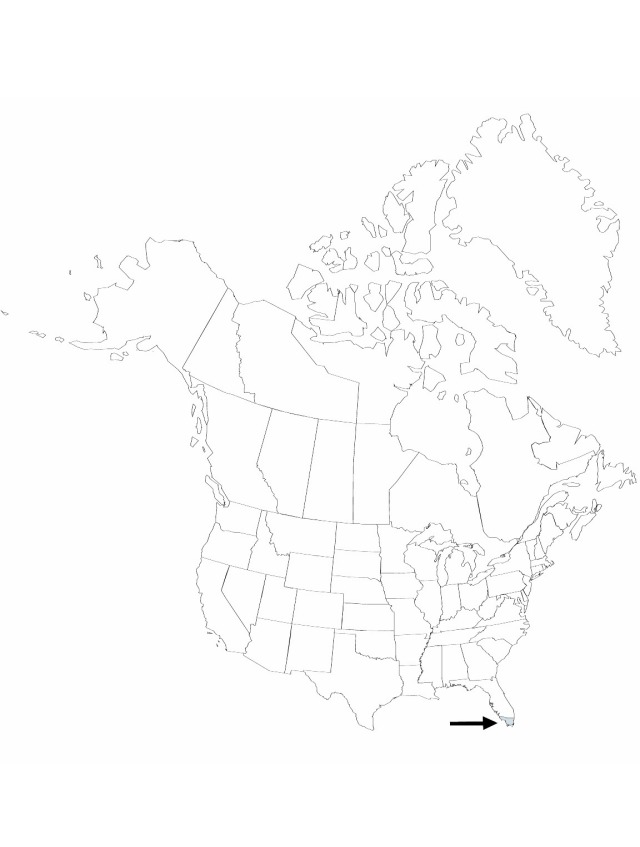Catopsis floribunda
Contributions from the Gray Herbarium of Harvard University 117:5. 1937.
Plants flowering to 0.6 m. Leaves erect to spreading, bright green, 20–40 cm, not covered with conspicuous, white, chalky powder; sheath pale or slightly darkened toward base, elliptic; blade narrowly triangular, apex attenuate. Inflorescences: scapes erect or leaning; bracts foliaceous, imbricate, spreading; inflorescences usually 2-pinnate, with 5–15 lateral branches; spikes 15–50-flowered, erect to pendulous, stipitate; floral bracts green, ovate, 4–5 mm. Flowers diurnal; sepals yellow-green, broadly elliptic, 4–6 mm, leathery, apex obtuse, surfaces glabrous; petals erect to very slightly spreading, white, elliptic, 6–8 mm; style included, stigma erect, simple. Fruits ellipsoid, 8–10 mm.
Phenology: Flowering fall–winter.
Habitat: Epiphytic on a variety of hosts in humid, shady situations
Elevation: 0–30 m
Distribution

Fla., Mexico, West Indies, Central America, South America.